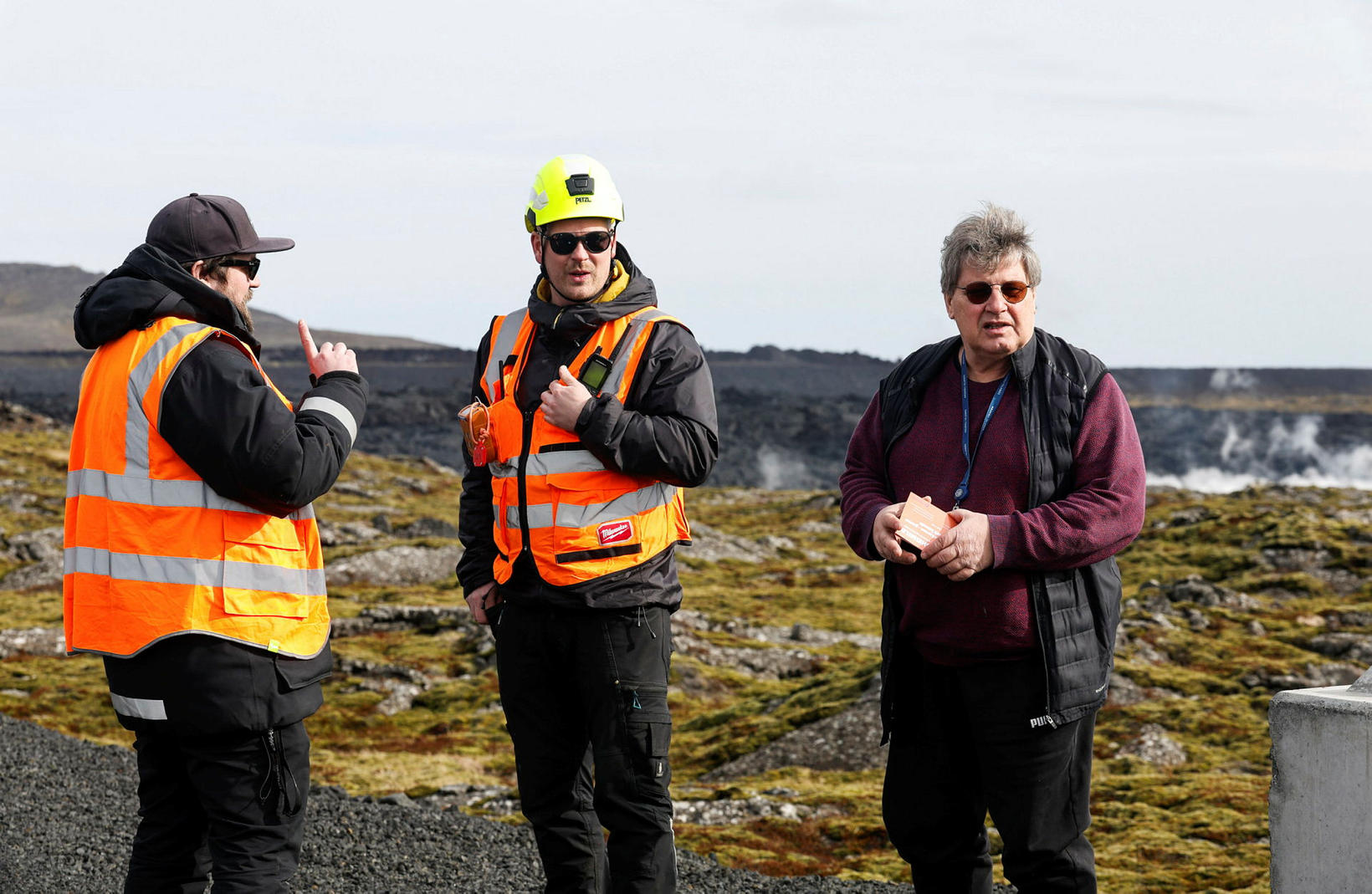Sundhnúkagígar crater row: “Maybe running out of fuel”
Volcanologist Þorvaldur Þórðarson (right) on the Reykjanes Peninsula in April. mbl.is/Eggert Jóhannesson
Land inflation beneath Svartsengi continues to fluctuate daily, and volcanologist Þorvaldur Þórðarson says these irregularities may signal that volcanic activity is starting to slow down.
“If the machine is starting to sputter a bit—well, we all know what it means when we’re running out of gas. It starts stalling and showing signs that it’s about to slow down and stop. Maybe the Sundhnúkur system is simply running low on fuel,” he said.
According to Þórðarson, the data suggests the Reykjanes Peninsula may be taking an early summer break—but, he adds, it’s just as likely to come back early from vacation.
Eruption likely if activity resumes
Þórðarson explains that magma is flowing into the shallow chamber at a rate of about 2 cubic meters per second. If that continues, along with steady land inflation, a new volcanic event could occur between mid-July and mid-August.
“If something does happen, it will likely be an eruption near the same area as before—just south of Stóra-Skógfell. The fissure could then extend either north or south—or both,” he said.
Increasing volume of magma
He expects the next eruption to be similar to the last one, though the duration will depend on how much magma is released.
“The volume accumulating between events has been increasing slightly over time. In March it was around 20 million cubic meters—now it’s nearing 25 million. If we assume 25 million cubic meters, we’re probably looking at the end of July or early August,” he noted, adding that the data remains uncertain.
“There isn’t much disagreement among scientists—the resolution of the data just isn’t very high.”
Possible impact on the Reykjavík area
Þórðarson also points to signs of activity in other areas, including Móhalsadalur and Krýsuvík. “One suspects that magma is starting to accumulate under that region—it’s a known volcanic zone. The fissure system between Sveifluháls and Trölladyngja runs north from there. If that becomes active, we could see an eruption far enough north to directly affect the greater Reykjavík area.”
He adds that Reykjanes itself has also been sending signals through frequent earthquake swarms, likely indicating magma buildup.
“If that system activates, we could see a submarine eruption, which could disrupt air traffic to and from Keflavík International Airport,” Þórðarson said.




/frimg/1/58/37/1583777.jpg)





